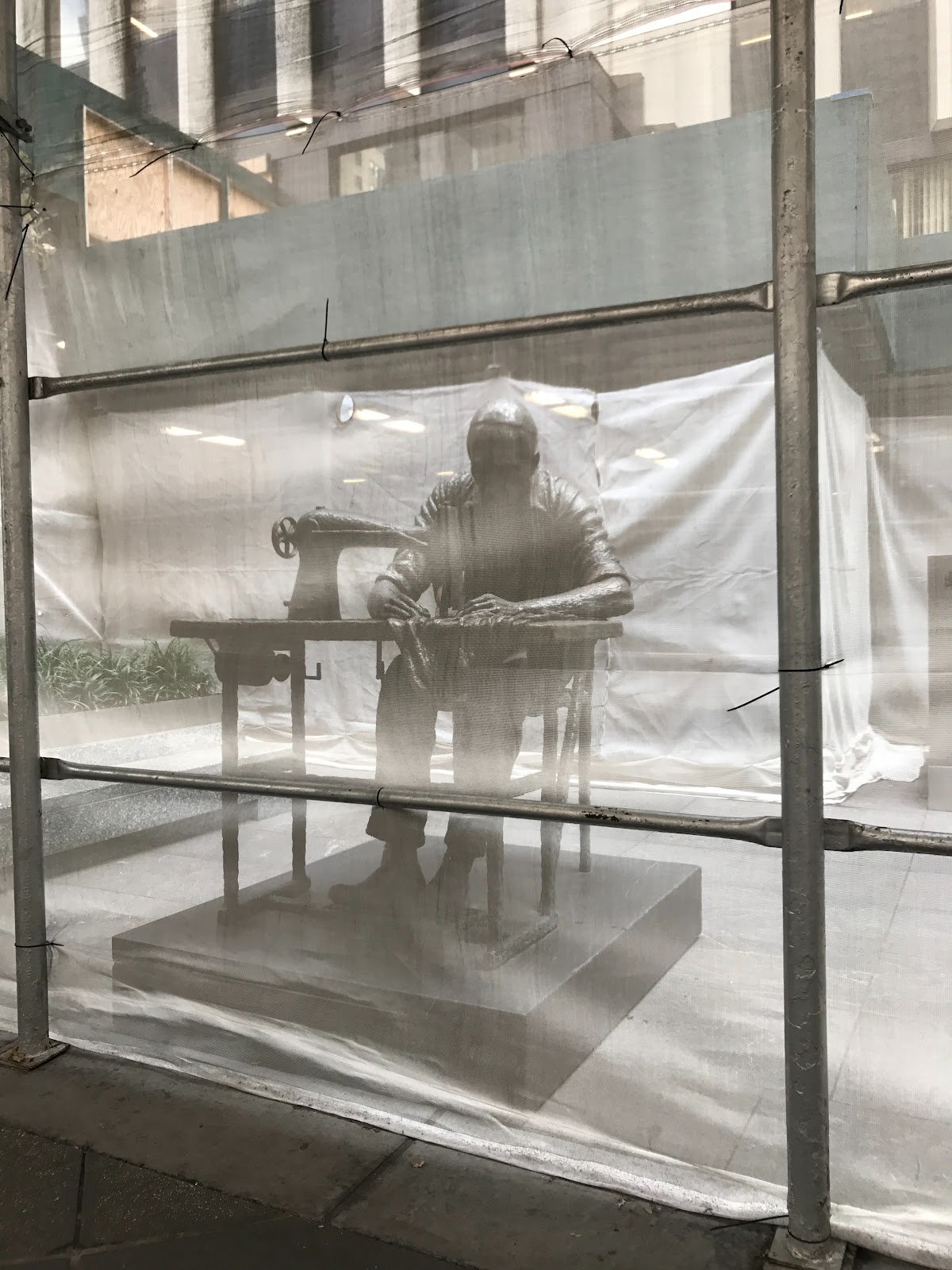The Garment Worker
By Sophie Ambro
One cold November day I was walking North on Seventh Avenue. I was rushing just like everyone around me. While waiting to cross at the corner of 39th street, I noticed a white sheet and scaffolding surrounding the Needle Threading A Button sculpture that usually hovers over the sidewalk. As a walked along the scaffolding I realized that behind the sheet, what looked like a large shadow, was a second sculpture. After doing a quick Google search on my phone to find out what this second sculpture was, I learned it was called The Garment Worker. The statue depicts a Jewish man wearing a yarmulke hunched over a sewing machine. The purpose of the sculpture is to commemorate the Jewish garment workers that made up much of the Jewish communities in New York City during the 20th century.
While standing off to the side, so I wasn’t in anyone’s way, I began feeling drawn to the sculpture. I thought about my ancestors that immigrated to New York City from Eastern Europe that this sculpture represented so well. My great-grandparents were Jews who immigrated to the Lower East Side, lived in tenements, and worked in the sweatshops in the Garment District. Every day they worked, hunched over sewing machines, just like the man I was standing next to in front of an office building. It reminded me of how prevalent Jewish culture is in New York City and the impact the Jewish community had. Looking at the sculpture made me feel proud to think that my ancestors sat just like him every day for years and years so I could have the life I have now.
As I thought about the Jewish influence on New York City, I was reminded about Peace of Mind by Rabbi Joshua Liebman. The contrast of recalling Liebman’s book, the first by a Jewish author to reach The New York Times Bestseller List, while standing next to the sculpture of the Jewish garment worker really exposed the struggles and challenges Jews have overcome in the past century. The post World War II world saw Jews fleeing Europe. Many, like my great-grandparents, came to New York City. But even once arriving in America Jews still faced discrimination and poverty. The seam shops were harsh working conditions for little pay. Peace of Mind gave Jews a sense of hope and comfort to get them through the post World War II trials they faced. The juxtaposition of Peace of Mind--which represents the Judeo-Christian sentiments as post World War II America attempted to separate from Europe-- and The Garment Worker-- which represents the hardships many Jews faced such as harsh working conditions-- shows the strength and fierceness of the Jewish community that has enabled them to overcome the struggles they have faced.
I started to wonder what the other people walking by thought. Did they notice the sculpture behind the sheet? Did they even realize the man was Jewish? People noticed me taking a picture of it before they saw the sculpture itself. I’m sure some didn’t bother looking and just thought I was taking a picture of the scaffolding. A few, without slowing down, did give the sculpture a quick glance. Hidden behind the sheet the sculpture is like a shadow that hovers along the sidewalk. Despite its size, it’s easy to pass it by, rushing to a work or school, and not notice it. Normally The Garment Worker rests among some benches that make up one of the many public spaces that can be found throughout the city. The Garment Worker alongside people as they talk on their phone, drink a cup of coffee, or take a short break from their busy day.




No comments:
Post a Comment